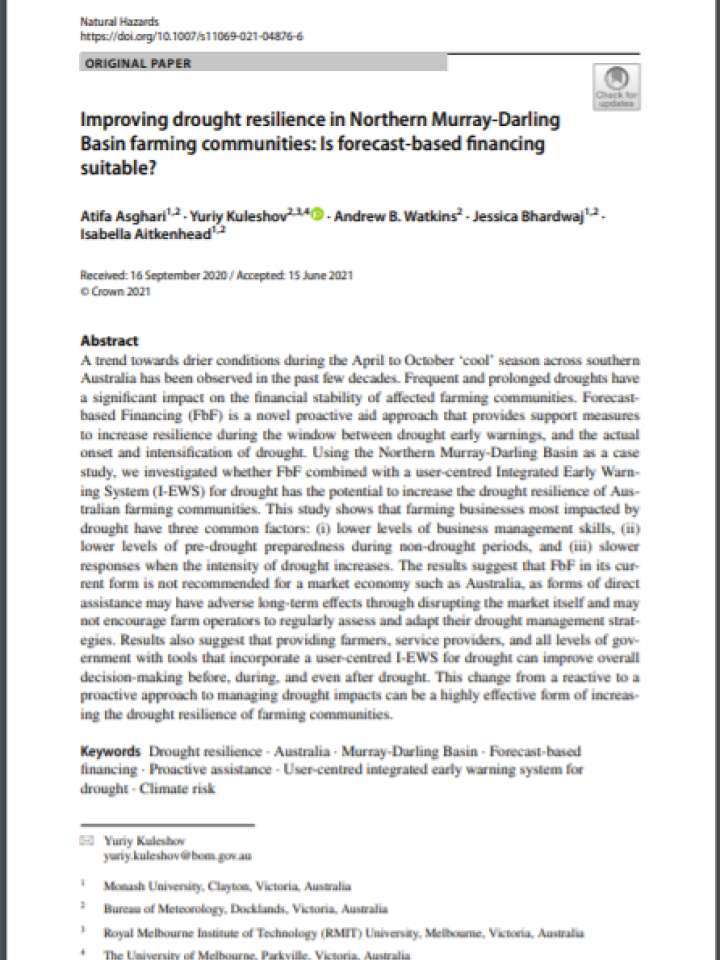Improving drought resilience in Northern Murray‑Darling Basin farming communities: Is forecast‑based financing suitable?
Using the Northern Murray-Darling Basin as a case study, this study investigated whether FbF combined with a user-centered Integrated Early Warning System (I-EWS) for drought has the potential to increase the drought resilience of Australian farming communities. A trend towards drier conditions during the April to October ‘cool’ season across southern Australia has been observed in the past few decades. Frequent and prolonged droughts have a significant impact on the financial stability of affected farming communities. Forecast-based Financing (FbF) is a novel proactive aid approach that provides support measures to increase resilience during the window between drought early warnings, and the actual onset and intensification of drought.
This study shows that farming businesses most impacted by drought have three common factors: (i) lower levels of business management skills, (ii) lower levels of pre-drought preparedness during non-drought periods, and (iii) slower responses when the intensity of drought increases. The results suggest that FbF in its current form is not recommended for a market economy such as Australia, as forms of direct assistance may have adverse long-term effects through disrupting the market itself and may not encourage farm operators to regularly assess and adapt their drought management strategies. Results also suggest that providing farmers, service providers, and all levels of government with tools that incorporate a user-centered I-EWS for drought can improve overall decision-making before, during, and even after drought. This change from a reactive to a proactive approach to managing drought impacts can be a highly effective form of increasing the drought resilience of farming communities.
Explore further

